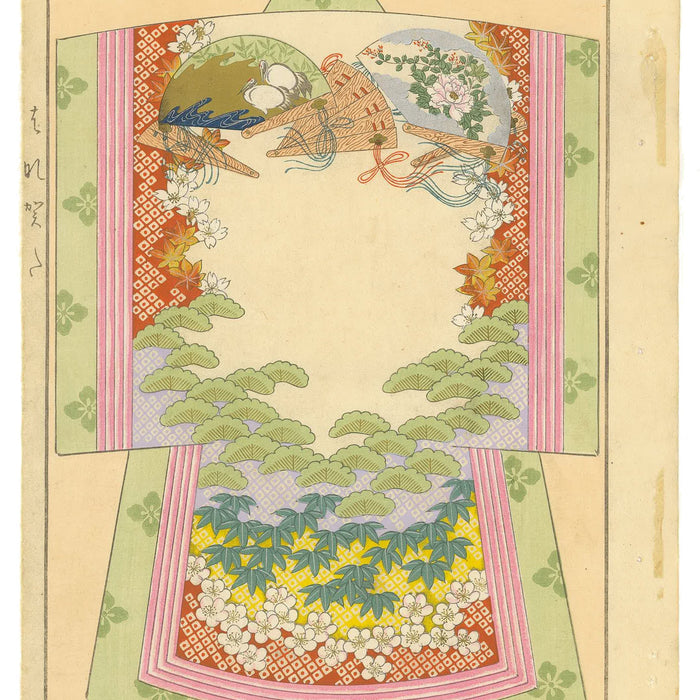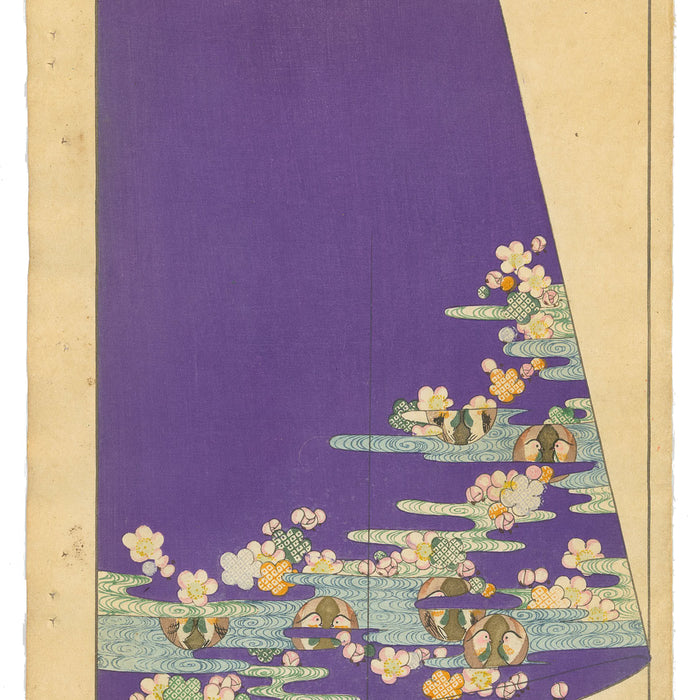
Cranes
In kimono design, the red-crowned Japanese crane was usually imbued with an auspicious meaning. It symbolises not only peace, loyalty, gratitude, and wisdom, but also reflects the wearers’ prospects for eternal youth and longevity. Its association with the kikko pattern, characterised by a hexagonal design reminiscent of a tortoiseshell, reinforces this symbolism by evoking the Japanese saying, “Cranes live a thousand years, tortoises ten thousand.”





